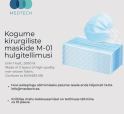Liver metastases are cancerous tumors that originate elsewhere and spread to the liver. Because the liver is the central filtration point for all the blood that circulates through your body, cells from many types of cancer that begin in other parts of your body — such as the colon, breast, pancreas, skin and lungs — can spread to the liver and metastasize, or grow into secondary cancerous tumors.
Liver cancer treatment requires high doses of radiation, and targeting liver tumors can be especially challenging. Radiation to healthy tissues can damage the stomach, kidneys and small intestine, as well as the heart, lungs and spinal cord. The liver itself and surrounding organs are very sensitive to radiation. Either a high dose to a small area, or a low dose to a large area, of these critical organs can lead to significant debilitating consequences.
Side effects of radiation treatment to the liver and surrounding areas may include nausea, vomiting, heartburn, cramping, malabsorption, diarrhea, and dehydration. In severe cases, they could include ulceration, perforation, internal bleeding and organ failures.
Proton therapy can provide effective local tumor control while being much less invasive than other treatments. It is anticipated that the anatomical advantages of treatment delivery in the seated position will allow physicians to more precisely treat patients with liver cancer, while reducing treatment related side effects.



